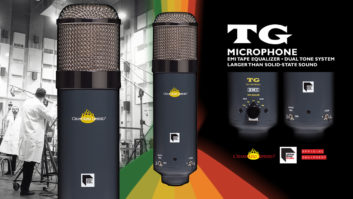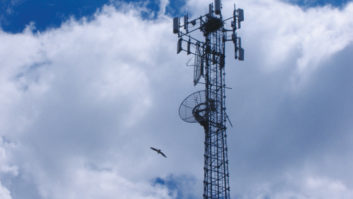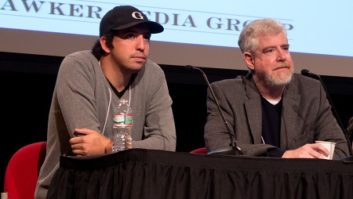The author is the programming director for KSDB(FM), licensed to Kansas State University.

The “Big Board” in KSDB’s election headquarters is used to keep track of mainly local races as the night goes on.
Reading a recent Radio World article about WSOU’s election coverage (“Campus View: How to Plan a News Takeover for a Music Station,” RadioWorld.com, Nov. 23) prompted me to share a few of my experiences as a college radio programming director during election night.
Covering an election at a college radio station is really a once-in-a-lifetime experience for most people. For 91.9 KSDB(FM), a station that’s been around for nearly 68 years at Kansas State University in Manhattan, Kan., we’ve had our share of elections. But as is the nature of constant turnover in college radio, the next generation usually has to do some reinventing of the wheel, as student employees often don’t write much down over the years. (And in the cast of KSDB, entire stations burn down every once in a while!)

Reporter Brennan Flanagan reads an election update from the main on-air studio during election night. Staff in this studio also coordinated remote broadcasts.

Reporters work in KSDB’s newsroom to prepare analysis for their periodic reports throughout the night.
This year, KSDB created a unique partnership between various campus media organizations. At K-State, our media outlets are very “unconverged” and are about as separate organizationally and geographically as possible. Our experiment was successful though, and KSDB served as the carrier for all the outlets, including The Collegian (newspaper) and Channel 8 News (student TV class).
KSDB is blessed with a large studio complex occupying the third floor of the music addition to McCain Auditorium, built in the mid-1970s. Not much has changed in that time, except the equipment. (Yes, the shag carpet is original.)
We designated our largest performance studio, Studio E, as our election headquarters. We had around 15 people stationed in there, starting at 5 p.m. until after midnight. The reporters in Studio E were made up of Collegian staff as well as KSDB staff, and they were designated local, state and national races to follow all night and were updated regularly on the “big board,” so we could keep track of everything. Reporters in Studio E would report to the main on-air studio, where I was acting as announcer and board operator, and came on the air as soon as there was an update. Someone else in the on-air studio would talk to Studio E through an intercom, as well as coordinate all of the remotes and live call-in reports.
In addition to our election headquarters, we had two students and a professor in Studio A in McCain providing commentary to make sense of the numbers coming out of Studio E. Between those two reports, we would go to our satellite studio in the Student Union, where someone else was pulling participants from the union’s watch party in for comments.

Fifteen or more reporters crowd in Studio E in the KSDB Studios in McCain Auditorium on the Kansas State Campus. The room normally is used for live band performances and classroom instruction.

Student reporters from KSDB and the Collegian are assigned races to follow and report on all night long. KSDB’s coverage went continuously from 7:15 p.m. to 12:15 a.m.
Between all of that, we had one Marti set up at the Democratic headquarters for Riley County, as well as another at the Republican headquarters. These teams checked in through the night and provided instant interviews with some of the local candidates.
Finally, reporters from Channel 8 news were at various watch parties throughout the state, and they called in with their own updates from their individual locations. Also, we had one reporter from a local TV news department call in with information.
All in all, I felt like I had a good chunk of northeast Kansas at my fingertips that night. We started election coverage at 6 p.m., went to continuous coverage at 7:15 p.m., and continued until 12:15 a.m. Finally, sometime after 2 a.m. local time, we announced the final presidential results.
In addition to all our other news sources, we had reporters monitoring other local news outlets. One of which did provide local election coverage, but only from 8–10 p.m.
In total, we had over 30 people involved in this coverage. The night was simply electric, with people constantly commenting on how the coverage was “the coolest thing I’ve ever done!” I felt the same.
We want to hear from you. Send letters to radioworld@nbmedia.com.






